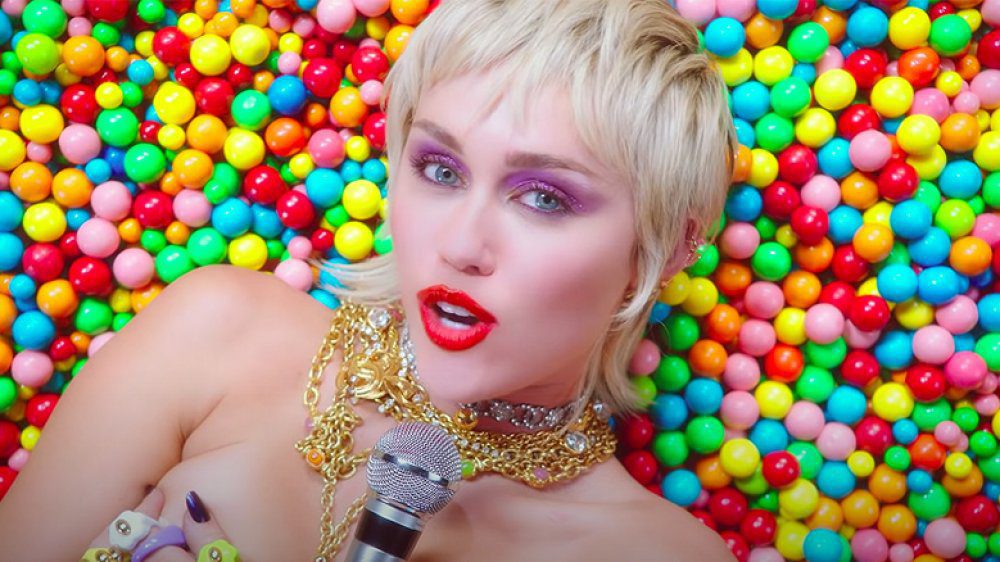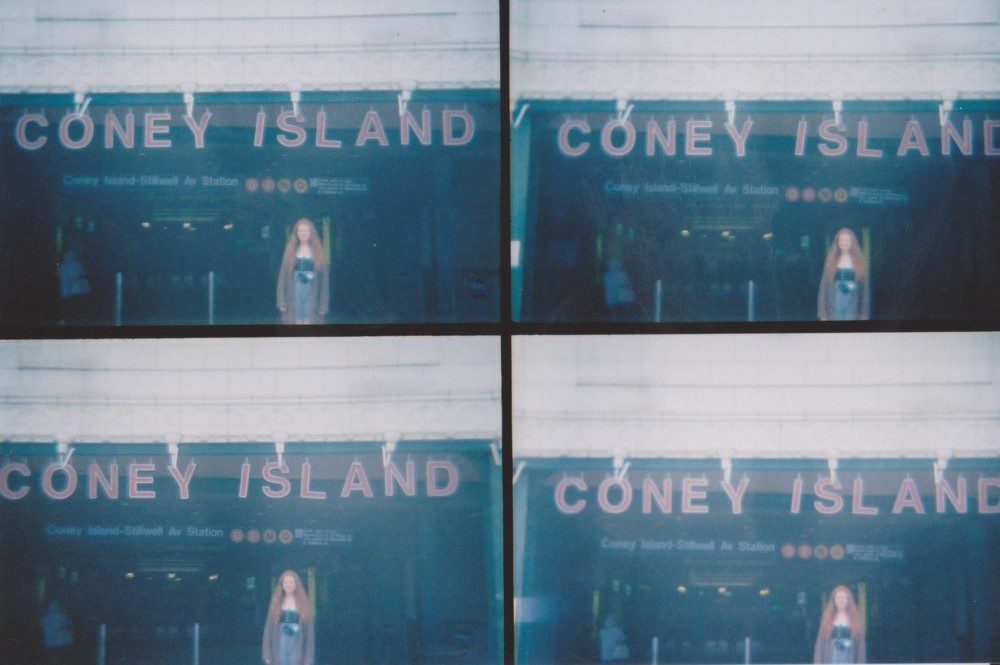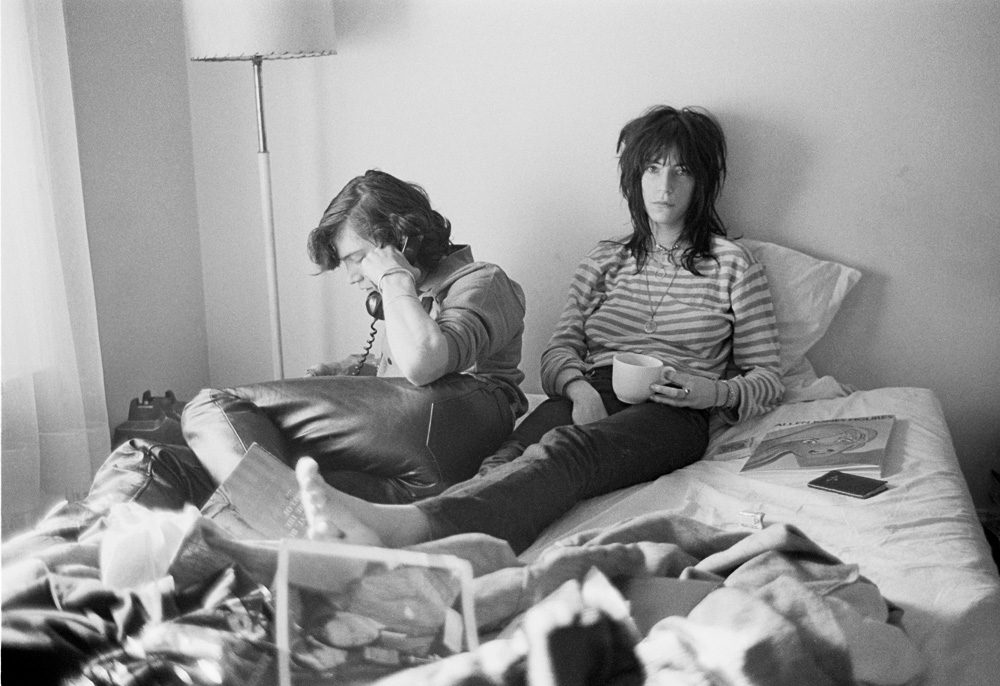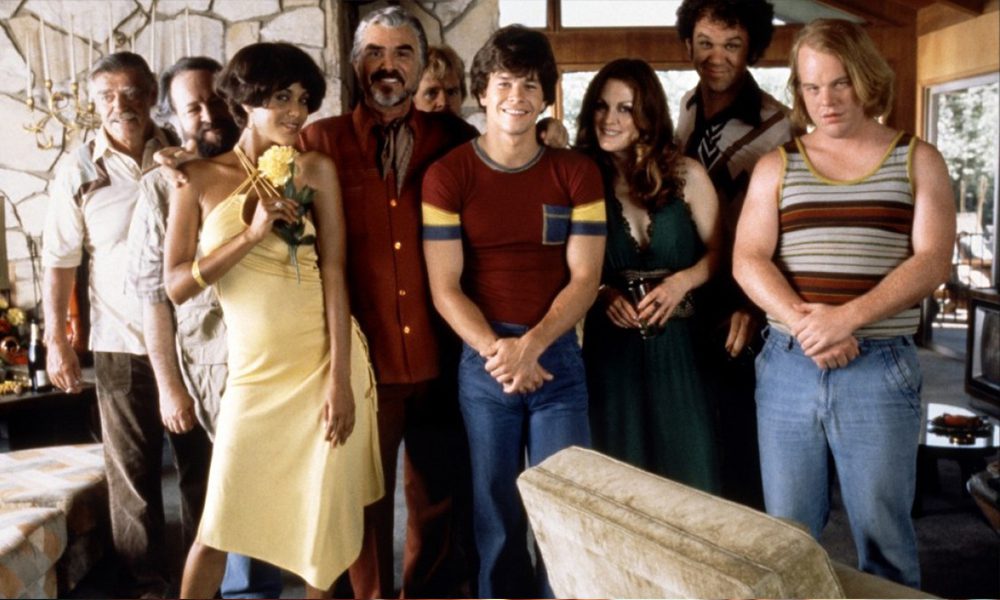ONLY NOISE: How Miley Cyrus Became The Soundtrack Of My Life


Vice Versa was a safe haven in my college years. Nestled among the rolling hills of West Virginia, and situated snuggly in downtown Morgantown, interwoven with the WVU campus, the gay club offered safety, glitter, and endless midnight thrills. My friends and I would head out on the town almost every Friday night, and our escapades seemed to stretch on endlessly if we let them.
Nothing takes me back to this time quite like “See You Again” by Miley Cyrus (or her alter-ego, Hannah Montana, depending on how you look at it). 13 years after its release, the song sweeps me away on such sweet memories, transporting me magically to one of the most transformative years of my life. It’s a special kind of emotional sensation listening to it now, imagining a 21-year-old me bumping and grinding on the dance floor in a sea of sweaty bodies ─ with the song’s sticky bubble gum melody coursing through my veins. There is nothing more intoxicating than the chorus dropping and literally everyone in sight belting along; it’s a state of euphoria that is almost indescribable.
“The last time I freaked out/I just kept lookin’ down/I st-st-stuttered when you asked me what I’m thinkin’ ’bout,” Miley sings, a playful glimmer in her eye. “Felt like I couldn’t breathe/You asked what’s wrong with me/My best friend Lesley said, ‘Oh, she’s just being Miley’/The next time we hang out, I will redeem myself/My heart, it can’t rest ’til then/Oh-woah-woah, I, I can’t wait to see you again.”
Miley could make you feel everything at all once. At only 15 years old, she could tear up the club with a ferocious bite, injecting you with the fearlessness to own the moment yourself. “See You Again” captures both the naivety of first love and dynamic musical chops, an elixir of rumbling electric guitars, thumping bass, and scratchy synths. It’s the perfect pop song of the 21st century ─ and I would be remiss if I didn’t acknowledge it as the song that defined my early 20s.
I didn’t know it then, but Miley would become the soundtrack for my entire life. Through every soaring high to the lowest of lows, her music has uplifted, empowered, and taught me it’s okay to not be okay. You just have to own whatever you’re feeling, naysayers be damned.
Miley was right in the middle of her turn on Disney Channel’s Hannah Montana, a high-glam coming-of-age sitcom about a young girl navigating the spotlight and grasping onto a sense of normalcy. I was only marginally familiar with the show, but it was the music I connected with most. Songs like “The Best of Both Worlds,” “Nobody’s Perfect,” “Life’s What You Make It,” and “One in a Million” ─ go-to favorites across the show’s first two soundtracks ─ laid the foundation for her particular brand of gooey pop-rock, borrowing influence from artists like Avril Lavigne and Kelly Clarkson.
While I can certainly appreciate Meet Miley Cyrus, (her debut album as an artist outside the Disney persona, though jointly released with Hannah Montana 2) and essential cuts like “G.N.O. (Girls Night Out)” and the wavy, mood-elevator “Start All Over,” it wasn’t until her 2008 sophomore effort, Breakout, that solidified my adoration for her, as well as her destiny as one of pop’s true greats.
That summer was one for the books. I was 22 and feeling like I needed to take a risk in my life. Two days after earning a Bachelor of Fine Arts in Acting, I sold off most of my belongings, hopped on a one-way flight, and started a new life as a cast member at Disney World. I was assigned to Tomorrowland Speedway, and despite my aversion to playing pretend as a race track mechanic/attendant, it proved vital to my personal growth.
It’s not the work I remember most; it’s the people. Oh, the people. It’s the group of friends I met at a random welcome pool party. Anxiety pounding in my chest, towel gracefully draped across my shoulder, I walked over to a group of young women who were all literally wearing the same style of shorts, just in different colors. If I was looking for a sign, I got one. We immediately bonded over our choice in casual attire and quickly got on with introductions ─ it was the kind of immediate friendship I will forever cherish.
Ali, Jessie, Becca, and I did everything together that summer. We gallivanted from Animal Kingdom to Epcot to Hollywood Studios to Magic Kingdom and back again. I even asked for a housing transfer to Chatham Square just so we could be closer in our everyday lives. It was awesome.
Meanwhile, Breakout was the soundtrack to it all. I listen to it now, and every inconsequential detail floods my brain like too much champagne on New Year’s Eve. From “7 Things” teaching me to put great value in self-worth to “Girls Just Wanna Have Fun” inviting me to live unapologetically free to “Fly on the Wall” and its grungy rock undercurrent, that record is one of those rare pop albums I listen to without skipping over anything. If I’m feeling particularly sad, I’ll put it on and get lost in the past. “Wake Up America” still makes me want to march for environmental conservation, and “Bottom of the Ocean” rips my heart out. She really did that.
Hannah Montana: The Movie and The Time of Our Lives EP both arrived a year later. In between, I had moved into my then-boyfriend’s house in Tampa, a few days after finishing my Disney job, and it seemed like the perfect decision at the time. Look, I was 23 – and I can’t say that I regret that moment but… within three weeks, I left and took a flight back to Morgantown. It was simply another pit stop in my very chaotic 20s.
I began working what felt like four jobs at the shiny new Red Lobster, getting up way before dawn so I could catch the bus, and I made damn sure to pack my MP3 player with as much Miley as I could. Between “The Climb” and EP songs like “When I Look at You,” “Obsessed,” and the bop-to-end-all-bops, “Party in the USA,” I found myself continuing to get lost in her little world. It was like she couldn’t stop delivering God-tier pop songs. I naturally had no clue where life was going to go next, so I let Miley be my guide.
As many pop stars do, particularly women, Miley shifted gears quite drastically to make a mature artistic statement. 2010’s Can’t Be Tamed struck like a bolt of lightning. She was 18 now, and coming into her own as a young woman, and the music directly mirrored her self actualization. “Liberty Walk” and “Can’t Be Tamed” are the obvious streaks of rebellion, but songs like “Two More Lonely People,” “Scars,” and “Robot” further underscored her growth as a bona fide rock star. And if you were looking to totally bawl your eyes out, you had “Forgiveness and Love” and the iconic “Stay” to do the trick.
After spending several months moving all over the East Coast, from Morgantown to Orlando to Washington, DC, I finally settled in Nashville. I was 24, and the world opened up in a way I never expected. I took online classes for a Master’s degree, got a part-time job at Old Navy, and dove head-first into the club scene. As Miley was blossoming into her full potential, so was I. I could really see myself for the first time in a long time, and Can’t Be Tamed was as much my own retaliation against the world as Miley’s artistic and personal peak.
Over the next few years, I bounced around some more. I went back to West Virginia. Then New York. And then back to Nashville. Now, it was 2013, and Bangerz crashed into my life like a wrecking ball. A new acquaintance gave me a real shot at her publication; I traipsed around Music City, getting my feet wet in the industry in a very real way: covering live shows and events, and interviewing the hottest new country acts. I took job at Kroger to make ends meet and even found myself exploring my sexuality in a way I never had before. But with all the risk-taking came very hard crashes the next two years.
Despite hitting rock bottom, Miley’s music continued to teach. “We Can’t Stop” encouraged me to shed past conceptions about myself, disregarding the haters, and rediscover liberation in my own body. “It’s our party, we can do what we want to/It’s our house, we can love who we want to,” she sings over a gummy beat. She evokes such energy with songs like “4×4,” “Love Money Party,” and “FU,” which still floors me with her vocal volatility.
I remember working nights sometimes, changing out price tags, and putting Bangerz on shuffle. “Drive,” “Maybe You’re Right,” “#GETITRIGHT,” “Someone Else” ─ what range of human emotion. Miley was finding new colors in her voice, too, learning how to fully lean on her throaty growl when a song warranted it, and she could really pulverize you over the head with a melody. During those long stretches of loneliness, as I worked my way through sterile food aisles, sometimes wondering what I was even doing with my life, her voice kept me going.
When the public and media predictably turned their backs on her, Miley stood her ground. She twerked. She lapped her tongue in the air. And she didn’t care. She was living life on her own terms – who were they to take that away from her? The personal freedom she’d found finally spilled over into her work with Miley Cyrus & Her Dead Petz. An insane 23-song collab with psych rockers The Flaming Lips, initially self-released on SoundCloud, funneled her weirdness into a smorgasbord of delectable cuts ─ the most peculiar among them “Milky Milky Milk,” “Fucking Fucked Up,” “Evil is But a Shadow,” and “Miley Tibetan Bowlzzz.” She kept squeezing those tear ducts, of course, zip-lining from “Karen Don’t Be Sad” to “Fweaky” (perhaps the crown jewel) to “Twinkle Song.”
I was smack dab in the middle of my own journey, as well. I left Nashville for West Virginia and then Pittsburgh. I was entering my late 20s and still felt like I had no idea what I was doing. I had lost my job at a mid-level publication, and a dear friend suggested I try a change of scenery to ground myself again. In the summer of 2015, I moved into a three-story townhouse with a friend of a friend and her friends, and it didn’t take long for chaos to set in. For the sake of respect, I’ll call my roommate Sally. Well, Sally had an abrasive, dominating personality, so much so that it became evident she wanted to play house mother, rather than be a real friend. While Miley was reclaiming her musical identity, I learned I too needed to declare my self-worth and take up a little room ─ and I soon retreated into my work and self evaluation.
In time, I eventually did figure things out. I moved back to New York (yes, again) a few months later and worked remotely for a Manhattan-based music site. Fate had kissed me, and I soaked it in. My career was actually moving forward; I felt good about myself, and I was dating again. Life was good.
But a curve ball hurled itself my way, as it always does. I found myself without work and needing to absolutely shake up old habits and severe toxic patterns. On the day Miley released Younger Now, a cosmopolitan-spun pop-country disc, on September 29, 2017, I moved back home to West Virginia for the final time. It’s funny. I spent nearly a decade running from my past and a dysfunctional family, without realizing I needed to confront it all head-on before I could truly fly free.
Younger Now saw Miley swerve in the opposite direction. She was still able to delve into her songwriting prowess, waxing introspective on songs like the title track, “Malibu,” “Miss You So Much,” and “I Would Die for You,” but, more importantly, she was coming into her own. Musically, she wasn’t mining new territory, but it was the return to her country roots that gave her more agency over her life and work. Her voice appeared to find greater, richer textures, as well. Her ability to glide so effortlessly across such melodies as “Rainbowland” (with Godmother Dolly Parton), “She’s Not Him,” and “Inspired” was just… invigorating.
With those 11 songs, I learned to be present in the moment. I learned that sometimes you need to hide away and reflect and allow life to wash over you. There’s no need to thrash around and bound away to whatever city every time things get a little too real. Those early days back home were hard, and I can’t pretend they weren’t. But I gave myself time. Time to really excavate past traumas, address toxic people in my life, and shed who I was, once and for all. I learned it was just a small detour in the grand scheme of things.
When you reassess an EP like 2019’s SHE IS COMING, which was originally supposed to kick off a trio of EPs, you get the sense Miley needed a detour, as well. “Mother’s Daughter,” “Unholy,” and “The Most” certainly shined brightest, and you could argue they were clear precursors to Plastic Hearts, her brand new record and magnum opus. Glittering 1980s pop-rock suits her voice, a voice as powerful as it is gilded with pain and heartache; she’s learned how to tame her growl, how to sculpt melodies that do much more than simply exist, and how to punch lyrics much harder.
Whether we’re talking brash, thumb biting opener “WTF Do I Know” or the perfect Steve Nicks tribute “Midnight Sky” or the strangely celestial “Never Be Me,” she has reached a level none of us could ever have predicted. Then, she tosses in homages to her past ─ the absolutely gut-punching “Angels Like You” harkens back to The Time of Our Lives and Breakout in its soaring pop sensibility. “High,” “Hate Me,” and “Golden G String” are among her finest entries to-date. She weaves from country heritage to angsty punk lyricism to heartrending simplicity, and at each step, she not only accepts her past but shines a light on the constant pressures of being in the spotlight.
Now in my 30s, life makes the most sense it ever has. Sure, your 20s are thrilling and unexpected, but you don’t really, truly know yourself until your 30s. I came out as non-binary a couple years ago; I’m hitting new highs in my career; and I’m finding this animalistic hunger to constantly declare that I am, in fact, worth it. So far, Plastic Hearts is teaching me to reconnect with my sexuality, remember the wonder and beauty that still does live in the world, and never settle for anything less than what I deserve. Life is far too short.
As I sit here listening to Plastic Hearts for the 100th time in the last few weeks, I decided to head on over to Metacritic to see what folks were saying. Color me surprised: it has a 75 rating, her highest to date. The media has never really given her credit for shaking up the industry, but it’s cool to see her getting the credit she deserves. She’s been slaying the game since the beginning, and it’s lovely to see the world finally take notice.




